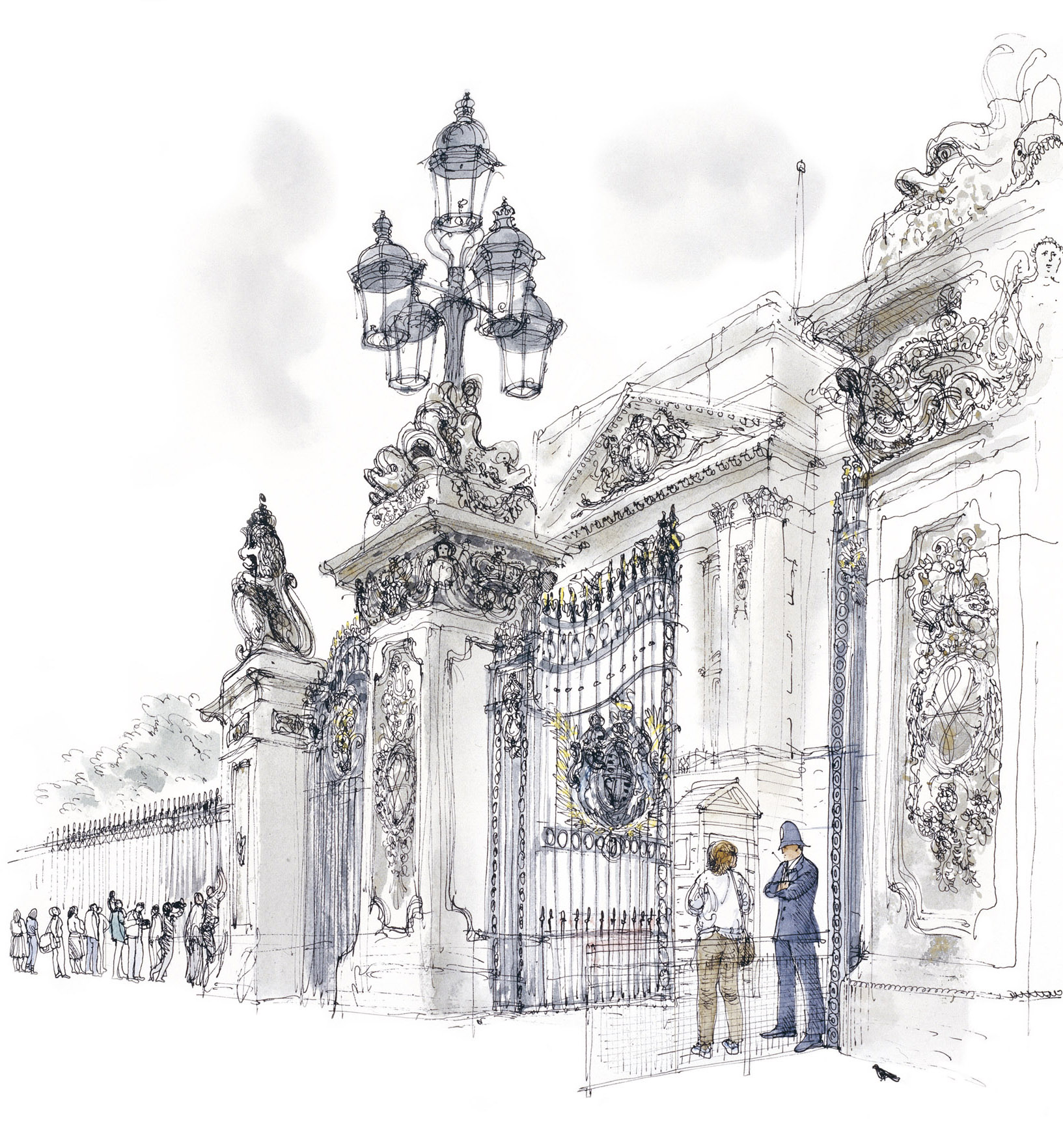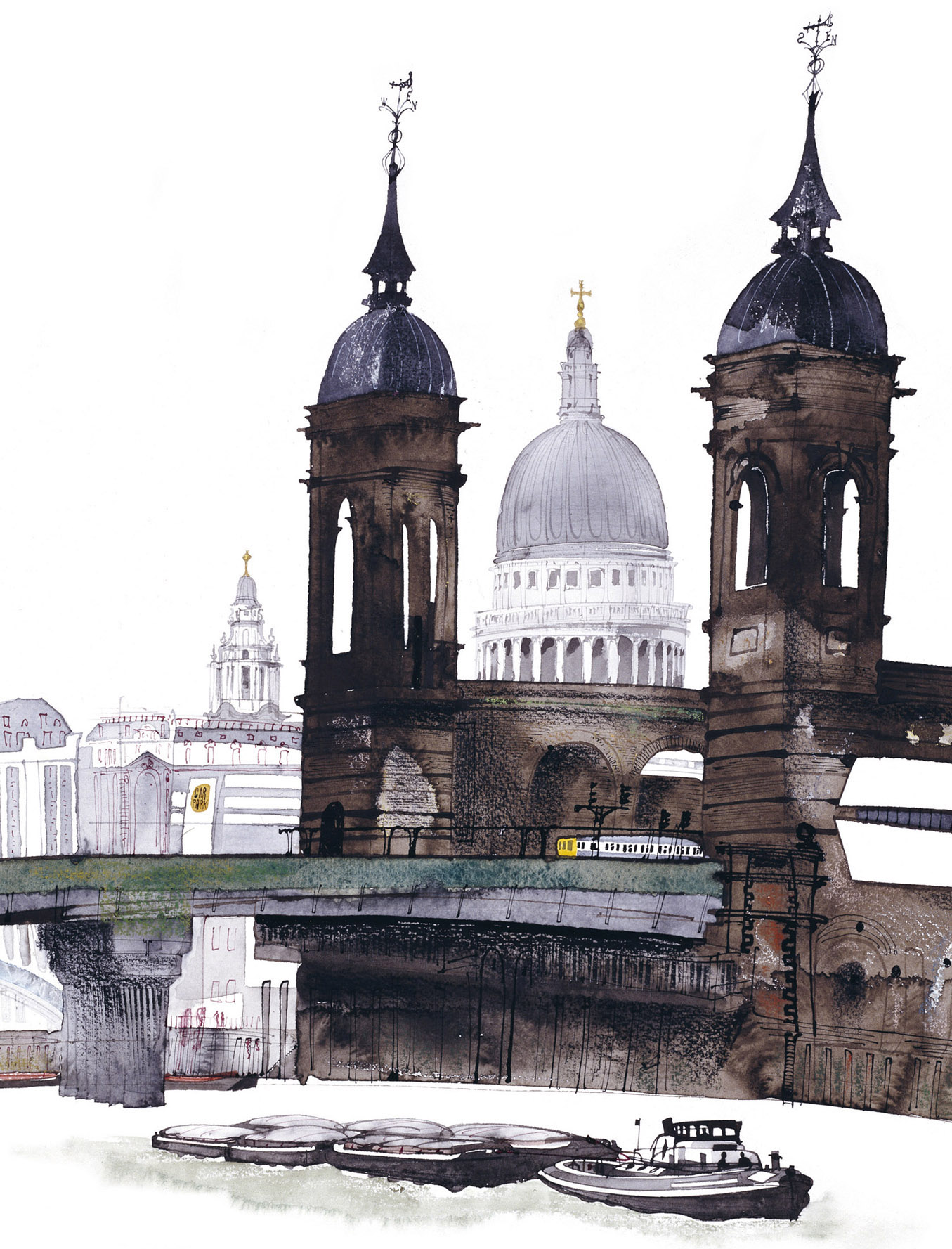Sights
The monumental London I knew in the sixties and seventies was still largely Victorian but it was beginning to change. At the beginning of the sixties I made a series of drawings for The Sunday Times to show how Central London was about to look in the new decade: imaginary aerial views of a new dual carriageway and big hotel for Park Lane, a new Shell Building opposite the Victoria Embankment, and a pedestrianized Leicester Square. While I was drawing on the pavement there a passer-by stopped to ask crossly why I didn’t get a proper job, but taking the drawing along to The Sunday Times’ deputy editor, fierce-looking behind his green eye-shades, felt proper enough.
This commission was one of many which would lead me to sketch, draw and paint watercolours of London’s most familiar sights, like Covent Garden, Westminster Abbey and the Foreign and Commonwealth Office, Buckingham Palace and Downing Street, the last looking by today’s more paranoid standards surprisingly vulnerable. The toy theatre-like poster (here) for London Transport was especially fun to research and design. I drew the architecture as precisely as possible with rulers, set squares and Rotring pens and then sprayed the colours on with an airbrush. Adding Queen Victoria’s head from the Penny Black stamp was a afterthought.
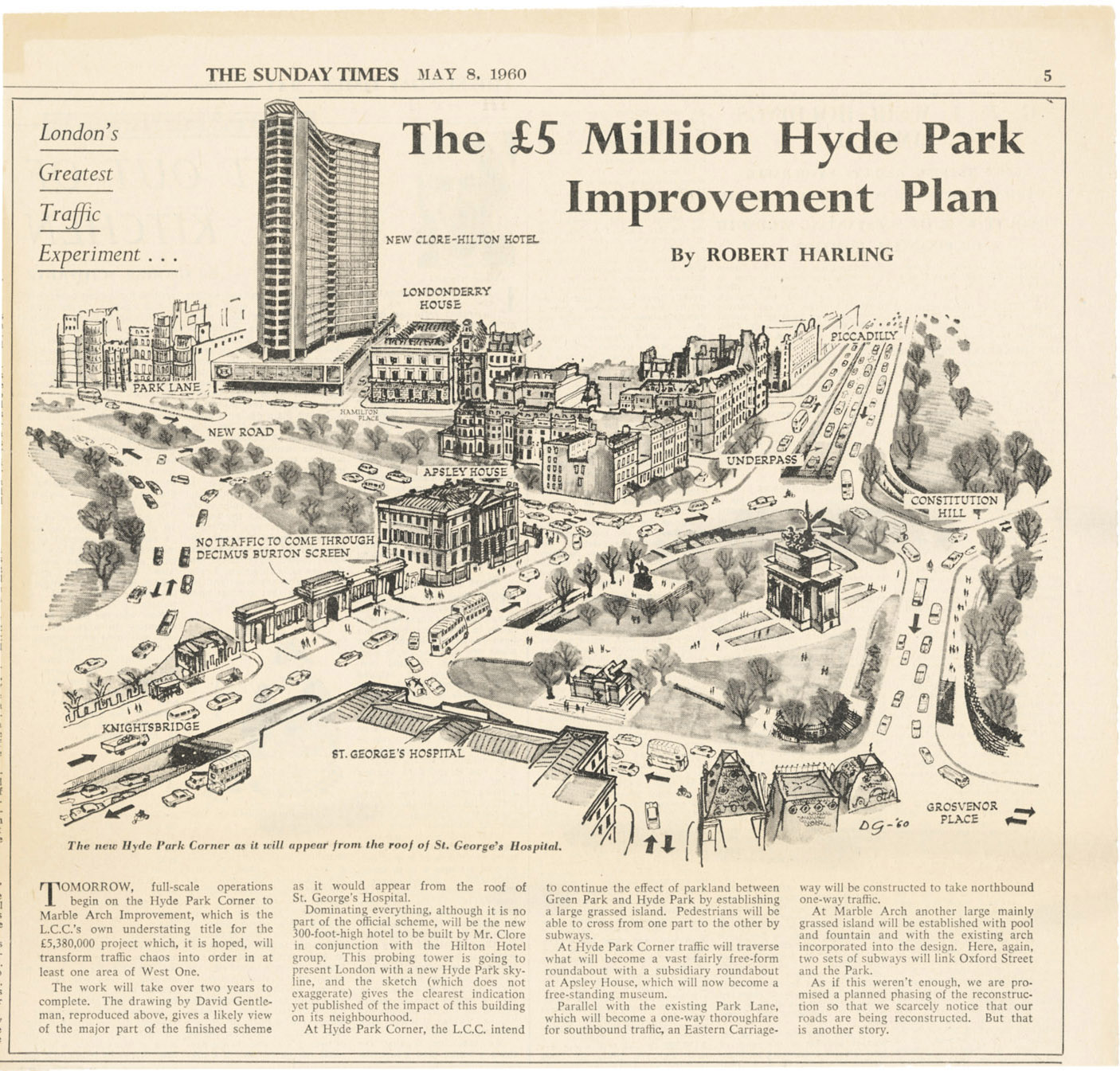
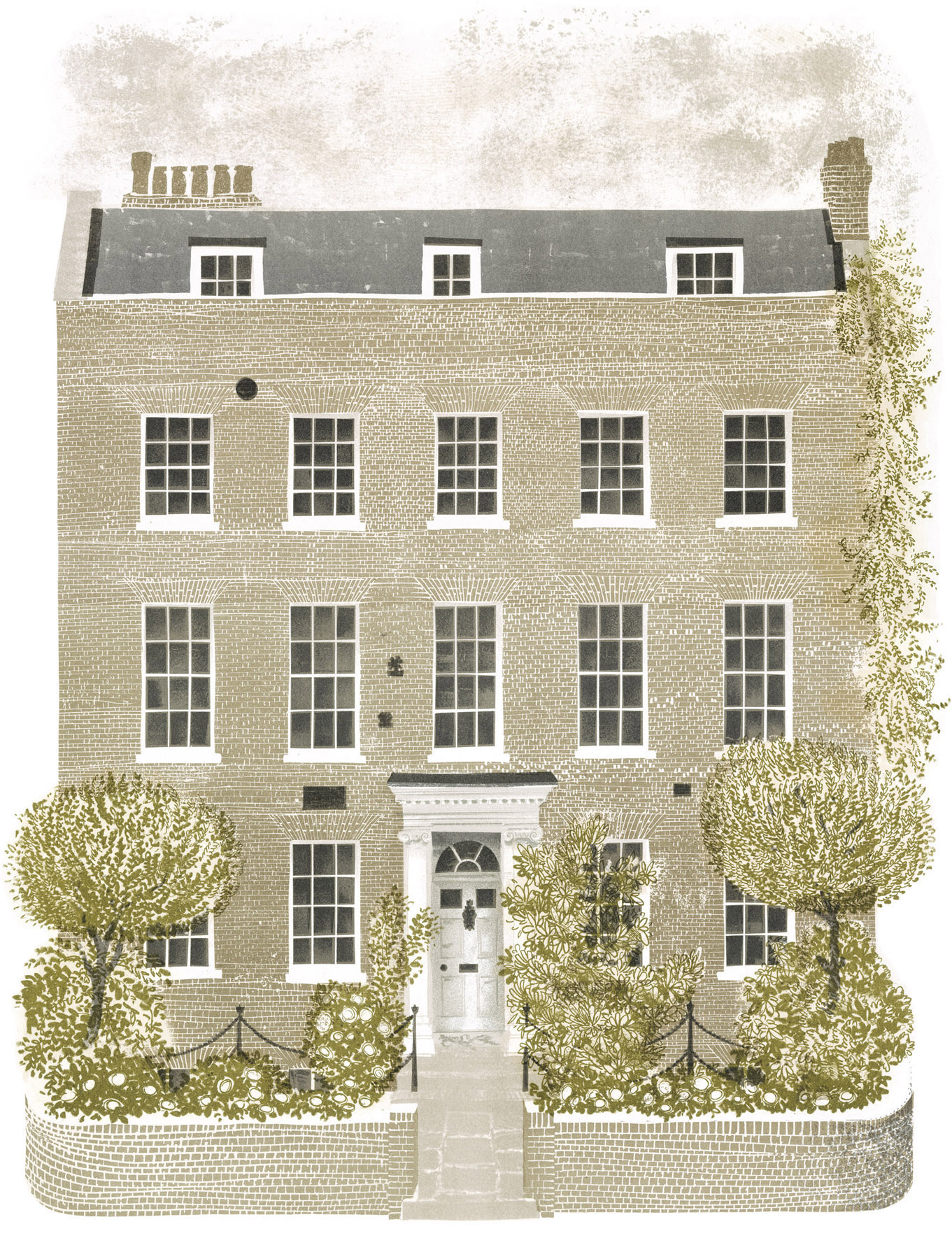
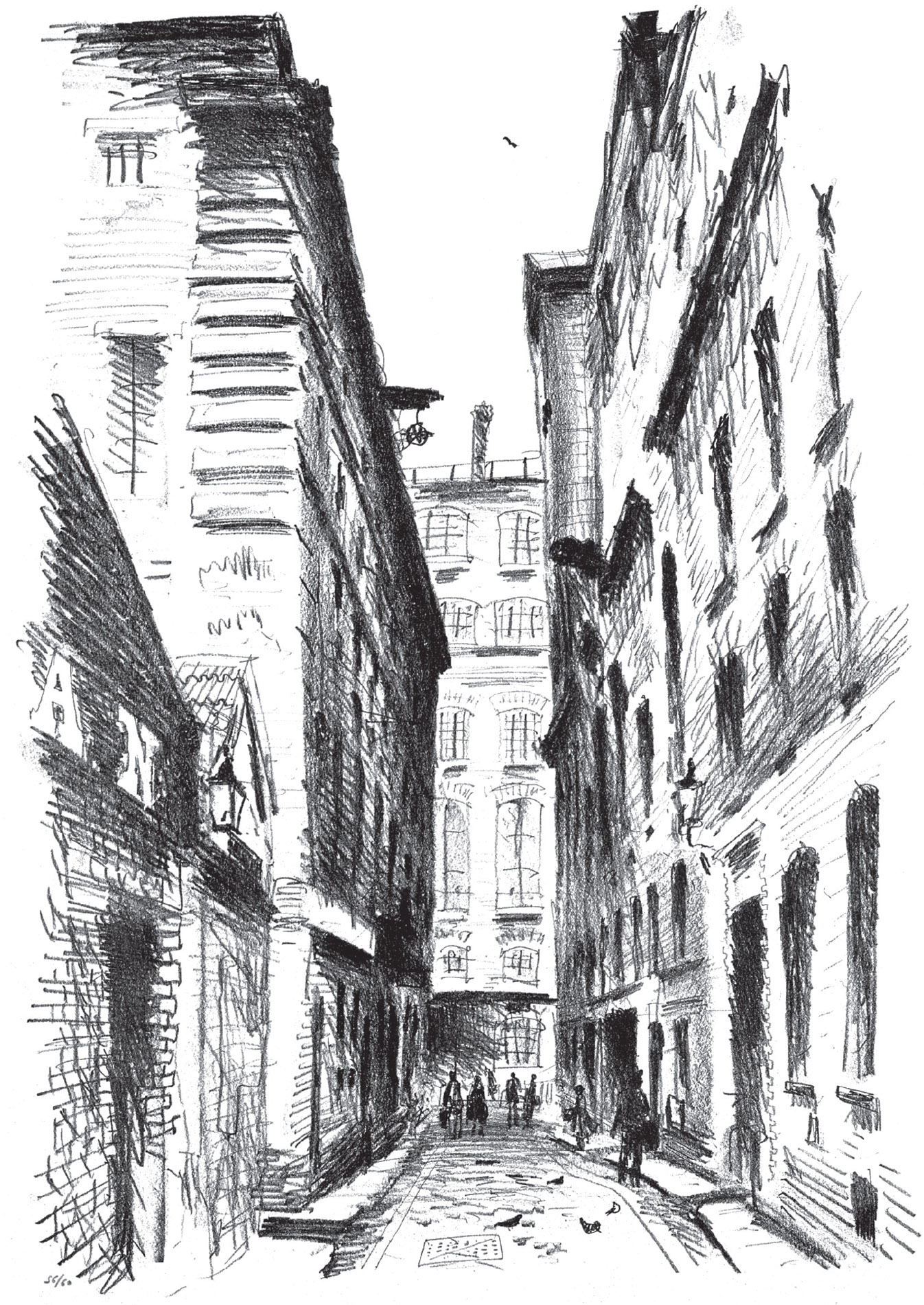
The lithograph here, which became the poster for a series, was drawn straight off one Sunday morning on a zinc plate balanced on the roof of my car. The tall buildings still served as warehouses storing fruit and vegetables then; now they’re shops or dancing schools.
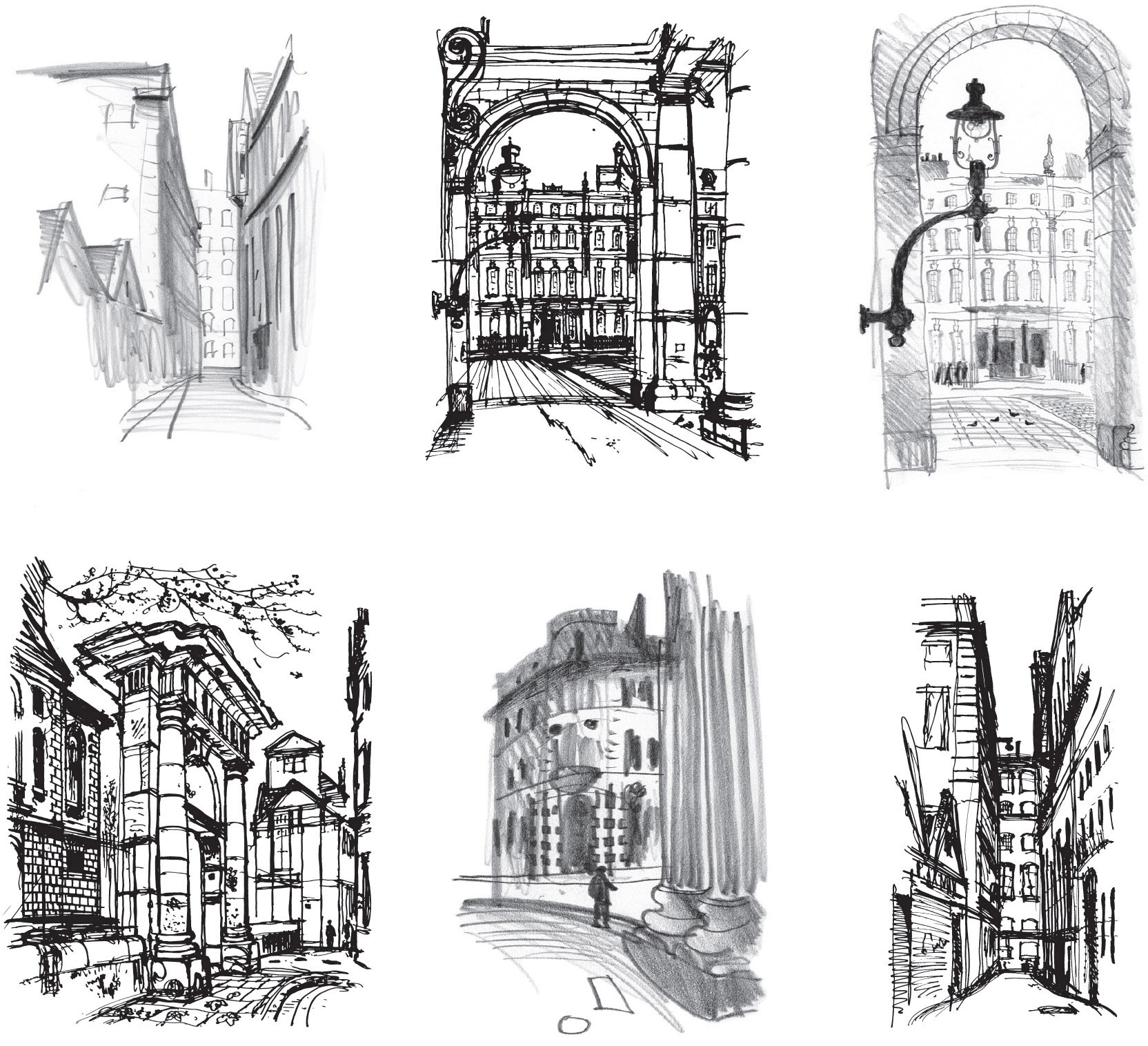
Apart from the Langley Street poster, almost all my lithos in those days were printed in several colours. I had first to make a simple key drawing – a guide which was then transferred onto each of the other zinc plates before I drew on them, but was not itself printed. Each different colour was drawn over such a key. These images needed precision but couldn’t have the Langley Street poster’s freedom.
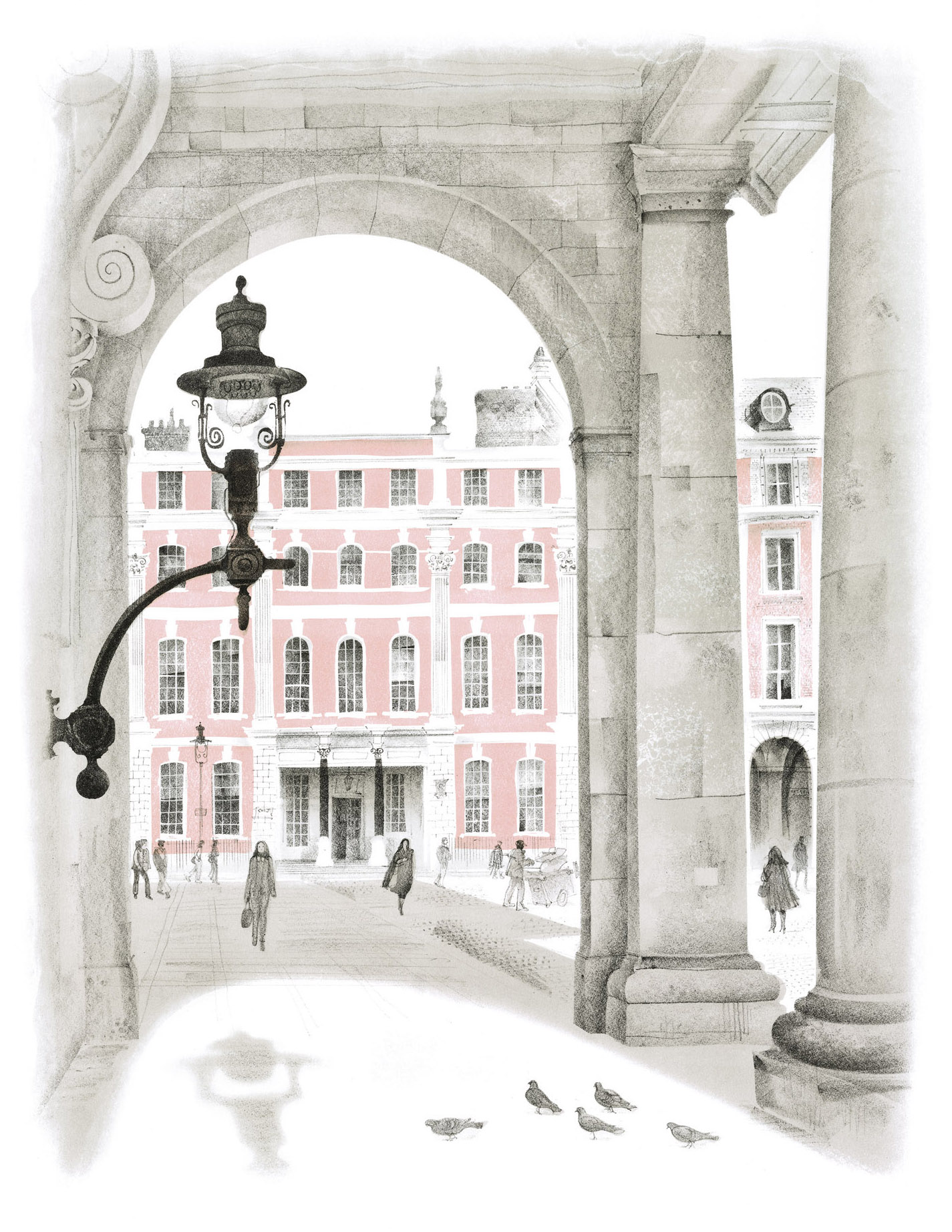
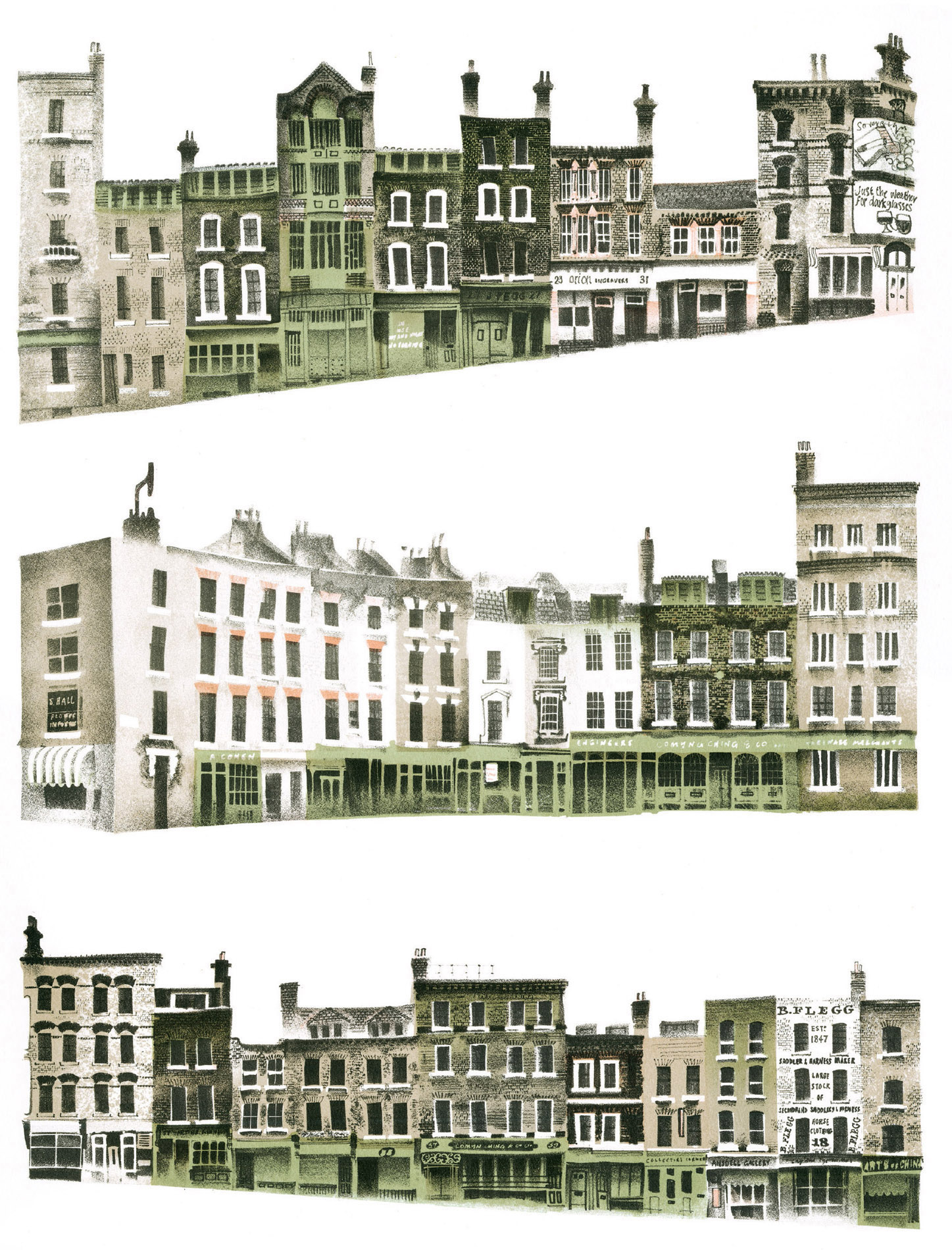
The old Covent Garden flower market is now the London Transport Museum. In 1972 anyone who got up early enough could still go in and buy a bunch. On this early print all the drawing is on the black litho plate, while the four colours (pale green, darker green, pale grey, grey-blue) are each drawn on separate plates. The colours are stronger on the later lithograph (here) of the imposing gateway into St Giles-in-the-Fields. Beyond it on the right were the premises of the theatrical scenery makers Brunskill and Loveday. In 1956 this renowned firm had built my one and only stage set for Roseland, a musical play which ran in the West End for just a week, mercifully putting paid to any notion I might have had of becoming a stage designer.
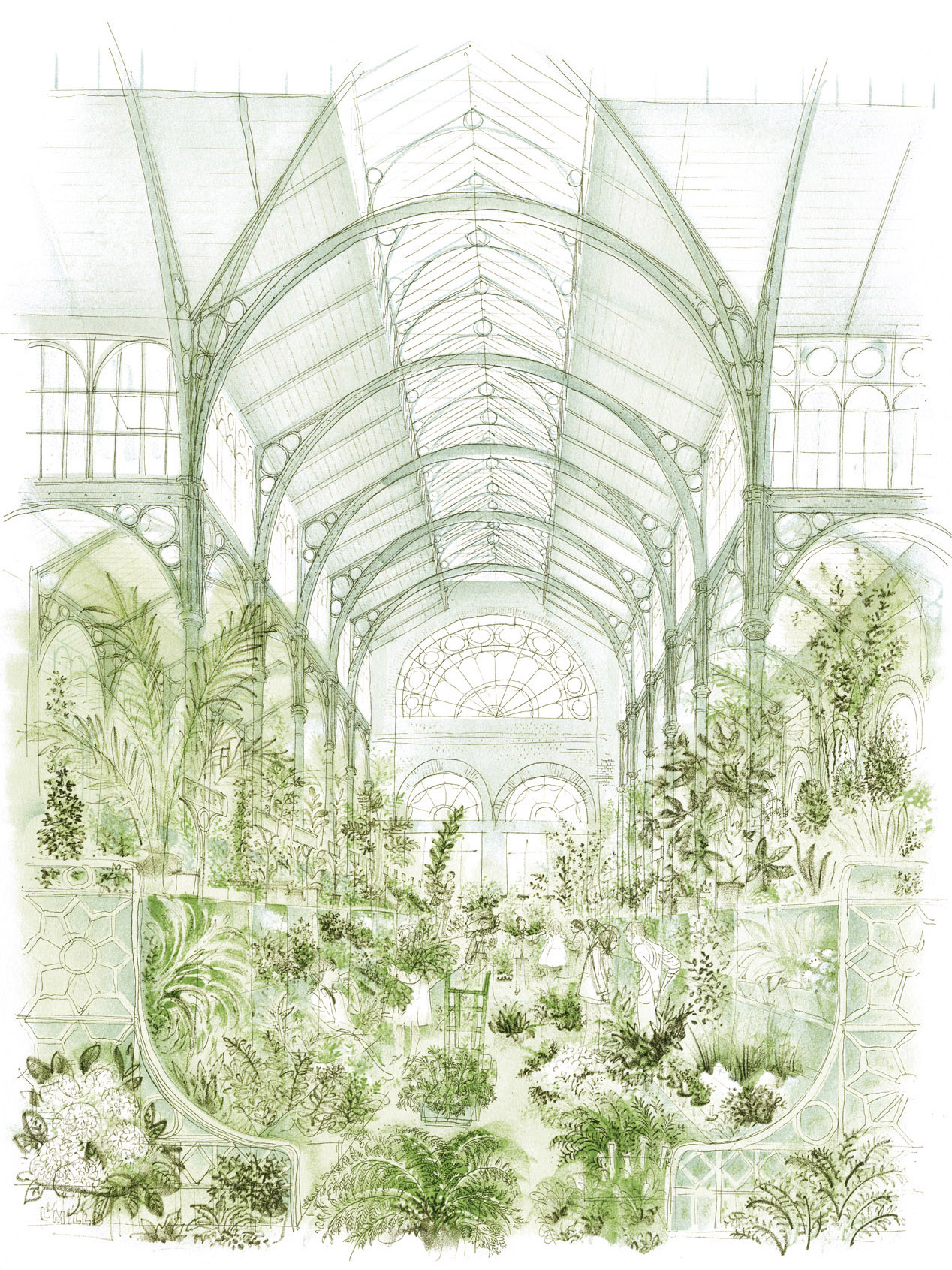
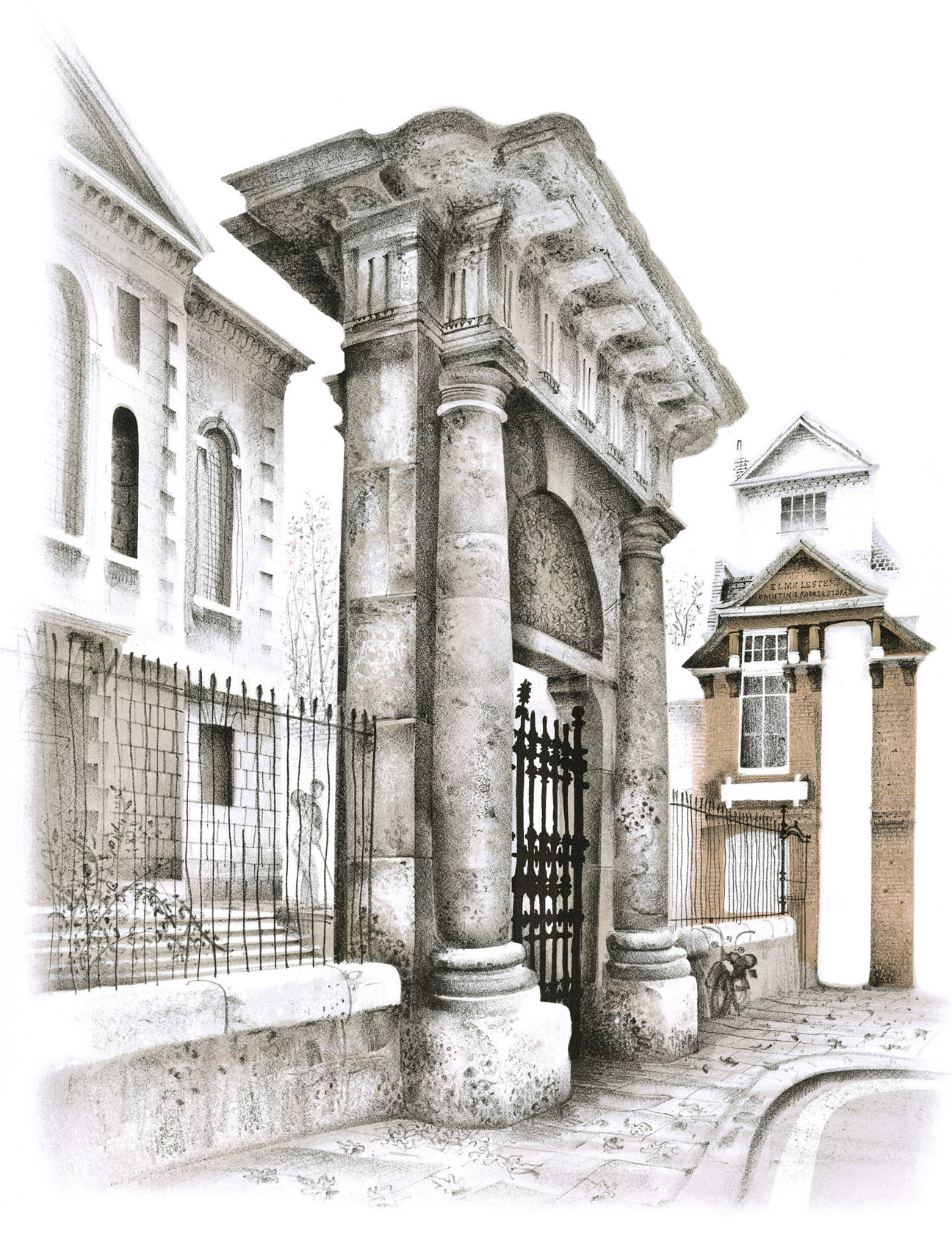
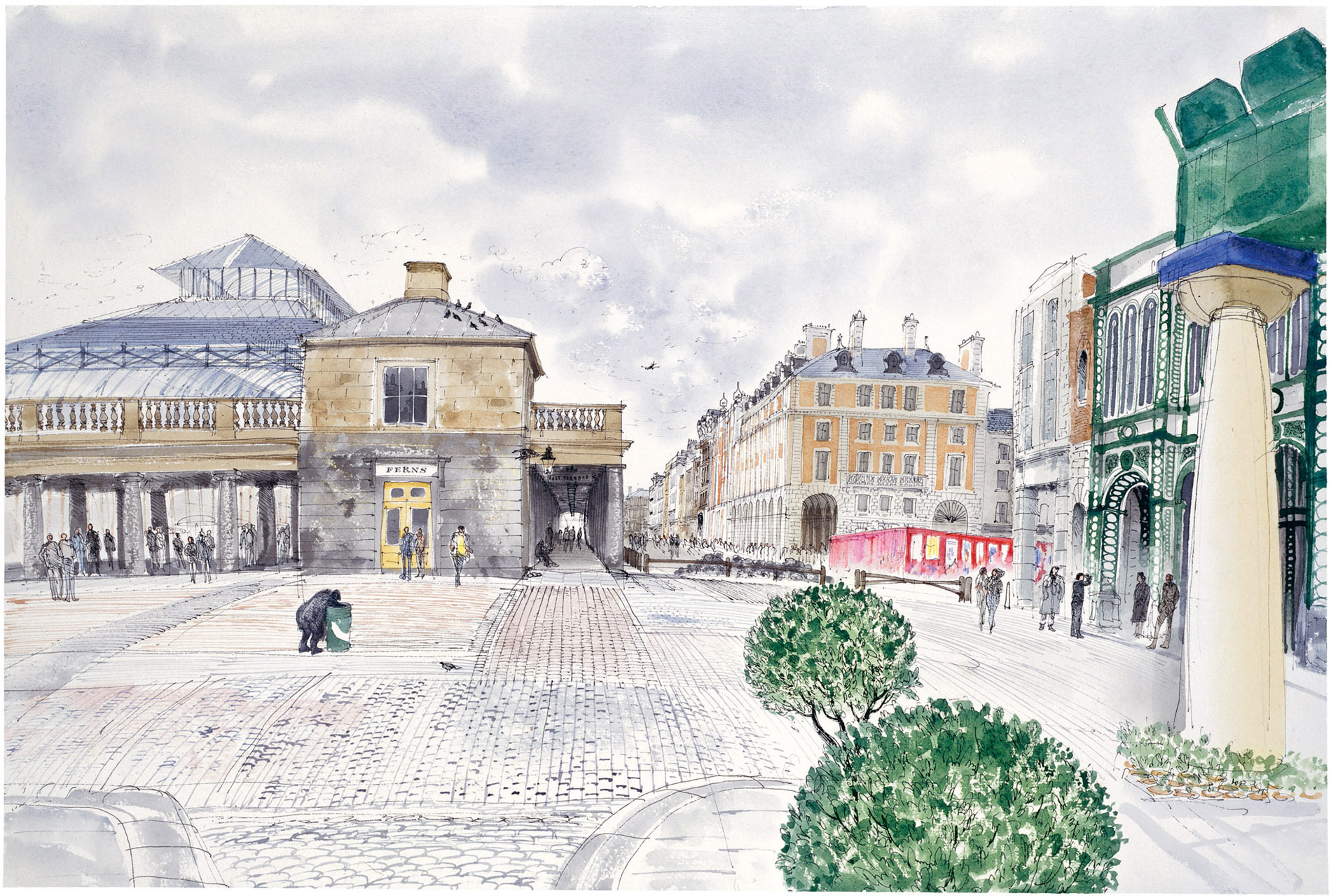
The drawing below was made for a book about Westminster Abbey and the one here was a sketch for a larger watercolour commissioned by the Foreign and Commonwealth Office. They reflect the contrast between the two great buildings: the Abbey’s Gothic sobriety and simplicity and the FCO’s excited Palmerstonian flamboyance.
The FCO, like the Albert Memorial and the Midland Grand Hotel at St Pancras station, was designed by Sir Gilbert Scott, but unlike them in classical style. It was built in mid-Victorian times in 1861–68. This quick sketch of its great staircase helped me decide which of its interiors to draw in greater detail. I loved the feeling of drawing in a great building at work, free from other intruders.
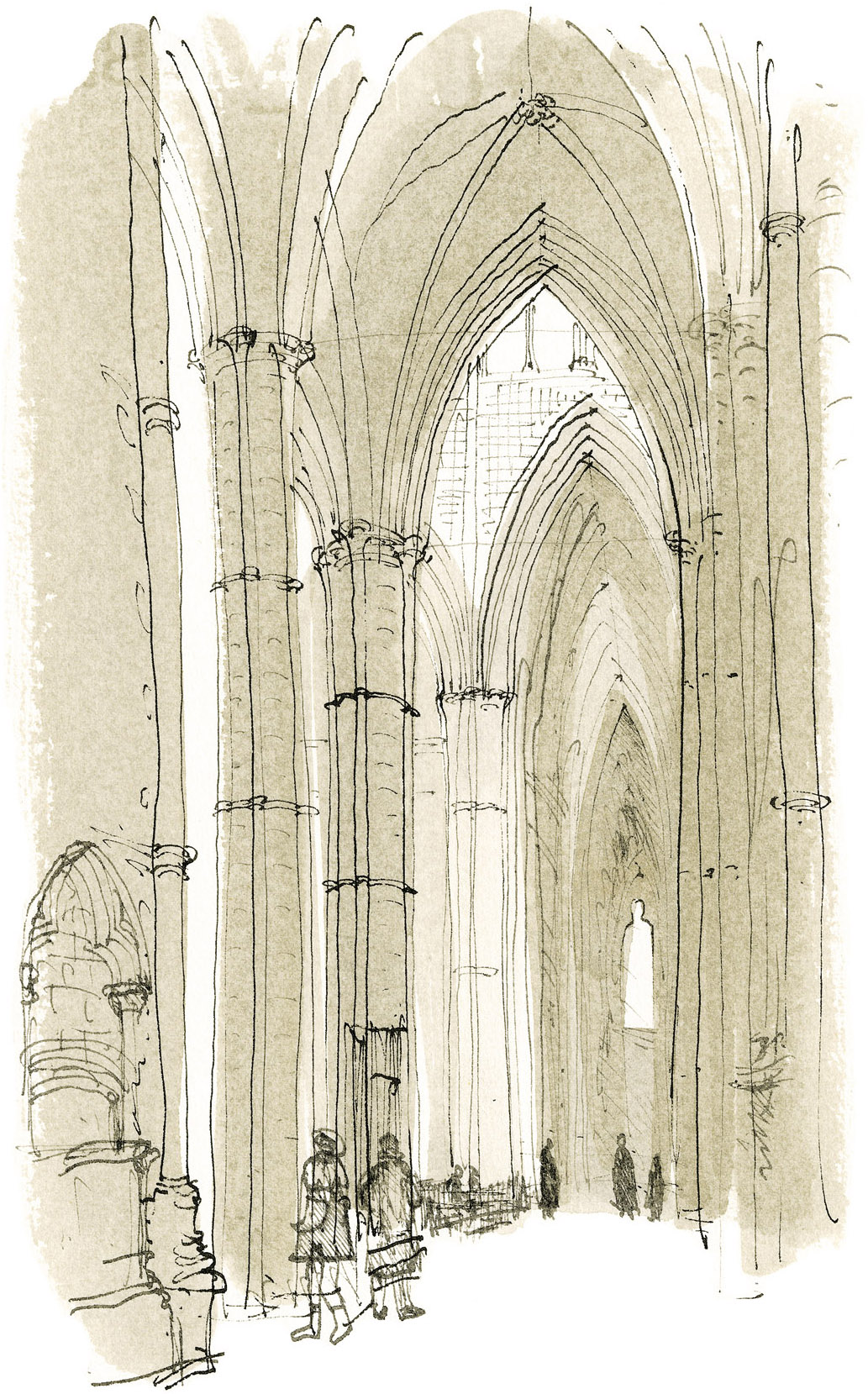
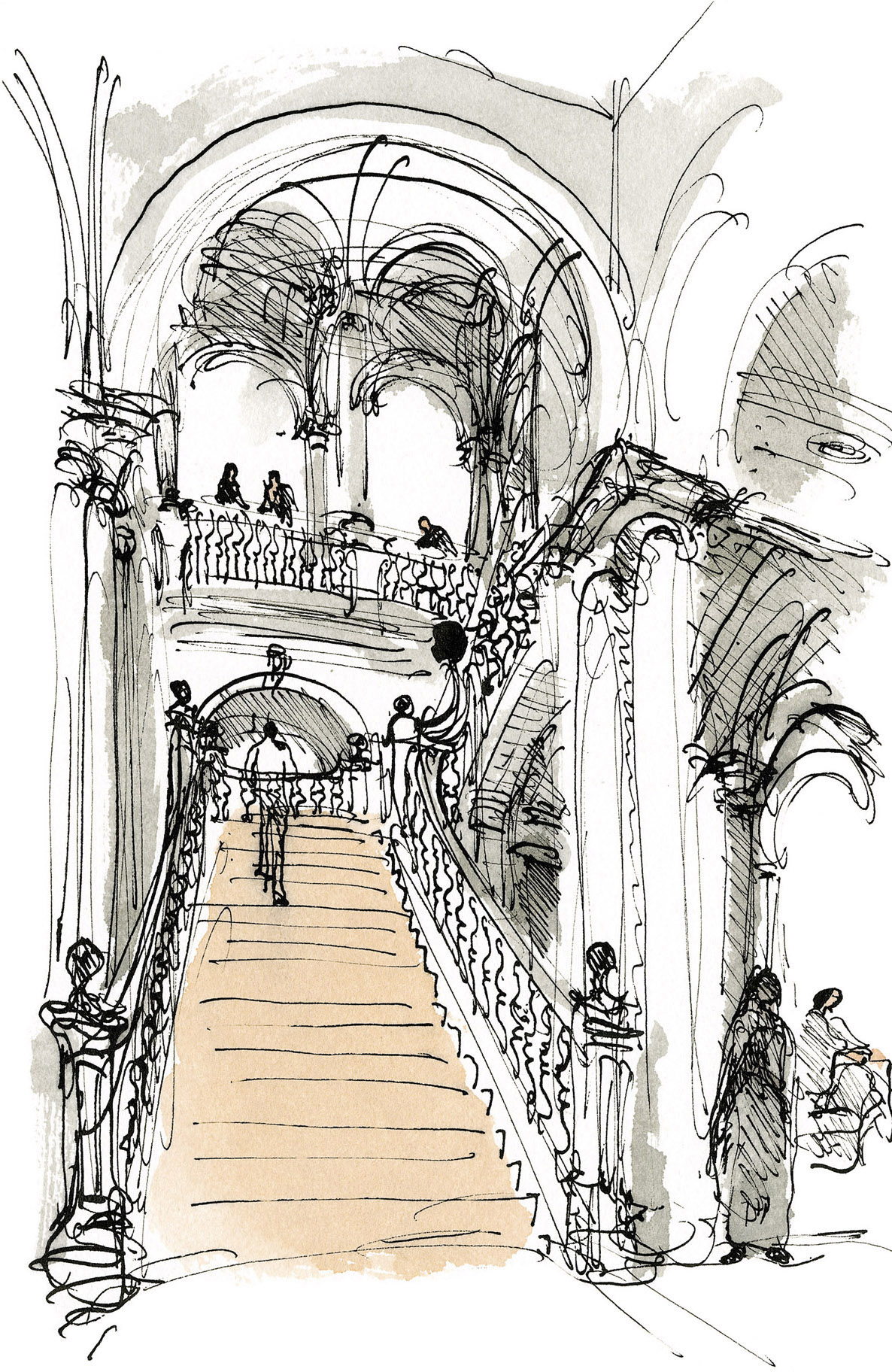
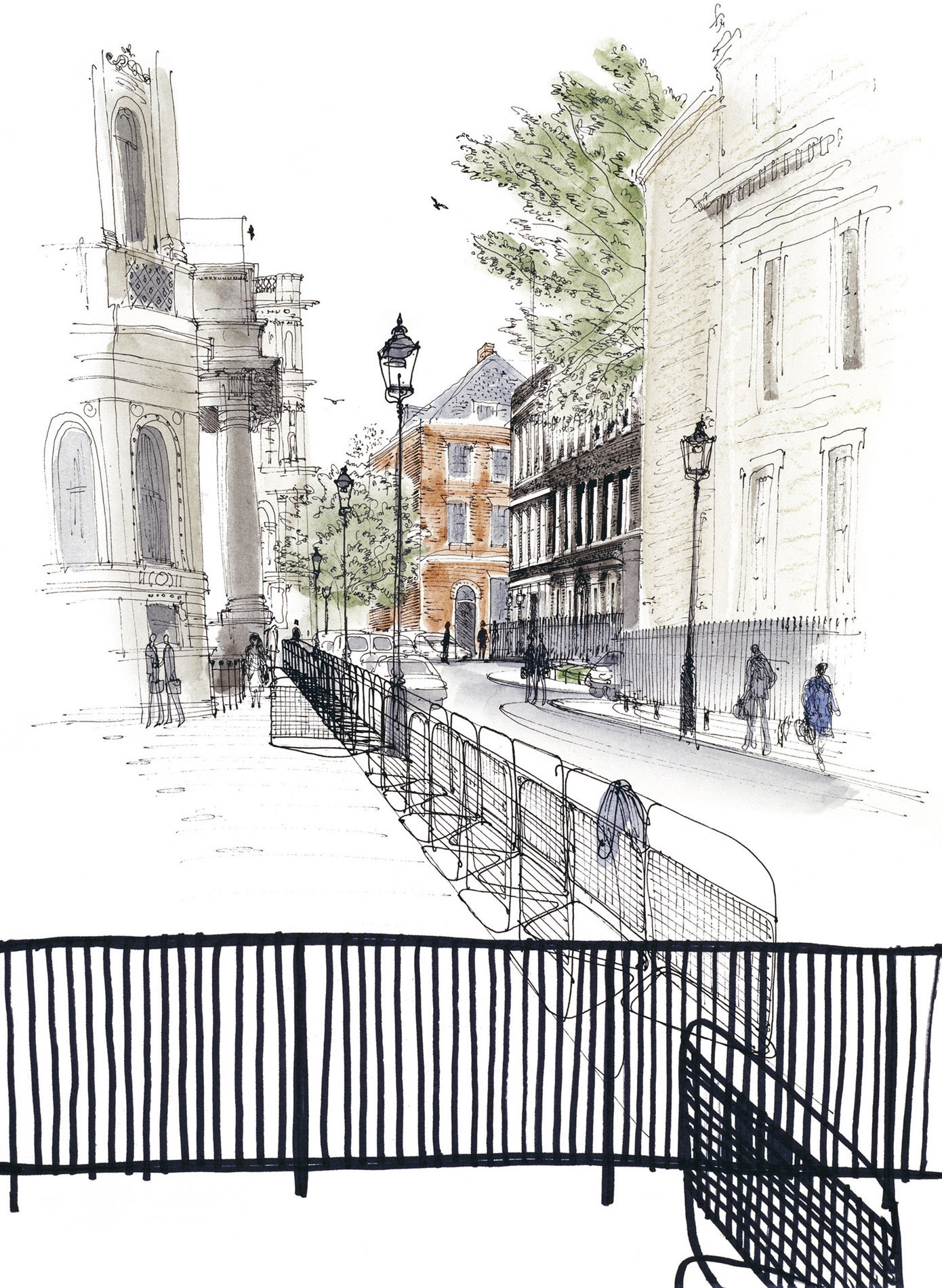
I drew these gateways to Downing Street and Buckingham Palace in the eighties. Downing Street even then looked more barricaded than I remembered from previous visits when anyone could just walk up it and look at Number Ten unhindered. Buckingham Palace has never looked particularly vulnerable, just majestically impossible to get into. But in July 2019 someone did manage to clamber over its gates in the middle of the night.
